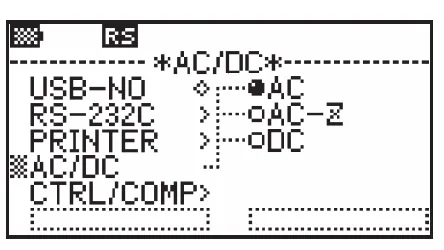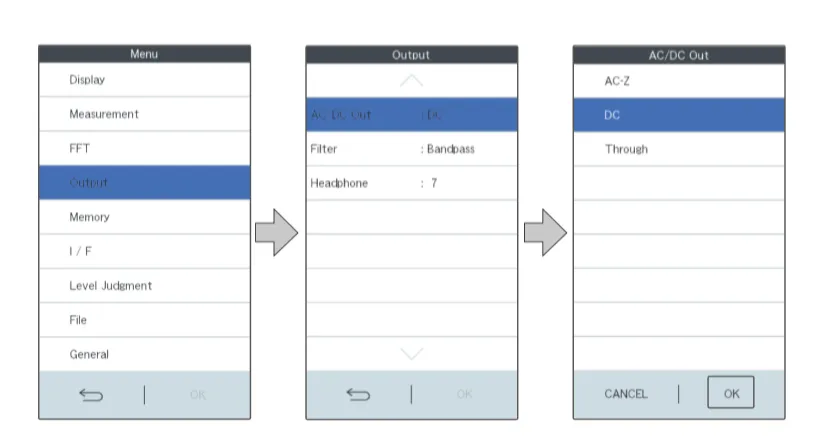No.11 Frequency weighting A, C, and Z part 2
There is an item called "Frequency weighting characteristics (A / C / Z)" in the settings when measuring sound with a sound level meter or FFT analyzer. In this column, I have summarized the questions about frequency weighting characteristics related to sound level meters in Q & A format.
What is frequency weighting A characteristics?
The A-weighting is a frequency weighting specified in JIS C1509 for measuring the noise level. The A-weighting is a characteristic created by approximating smaller sound of the equal-loudness curve (previous standard) for pure tone. It was fund that the A-weighting is more suitable for measuring noise level than C-weighting even if sound is loud. Thus, the A-weighting has been commonly used for measuring the noise level.
Which frequency weighting should be used, A or Z?
We generally usage the A-weighting when measuring how a human hears sounds. The general usages are as follows.
Using the A-weighting for noise measurement
- Property boundaries of factory, building, construction site, etc
Road, railroad, air plain
- Work environment
- Evaluating how a human feels the loudness of the operating noise of a mechanical system, etc
- The measurement standard or guideline specified that measurement should be performed using the A-weighting
Using the Z-weighting
- A human listens to and evaluating the recorded sounds to play back through speakers or headphones.
Since the human ear has the characteristic close to the A-weighting, you will hear different when sounds are recorded applying the A-weighting and when they are heard directly.
- When calculating loudness, NC value, etc. based on the measurement results.
Since human auditory sensation is taken into account in the process of calculating loudness and NC values, the Z-weighting (FLAT) is used to measure the original data.
- When measuring the operating sounds of a machine to understand its physical characteristics, aging, etc., or when predicting failures, etc.
Since it is a measurement that has no relation to human hearing characteristics, the A-weighting is not used.
Is the A-weighting applied to AC output of sound level meter?
When our sound level meter is set to the A-weighting/C-weighting, the signal applied to A-weighting / C-weighting is output from the analog output (AC).
When the sound level meter is set to DUAL mode or QUAD mode (the mode that measures 2 to 4 conditions at the same time), the signal that is applied to the frequency weighting specified in the MAIN unit condition is output to the analog output (AC).
If the sound level meter is set to real time octave (RTA) mode, you can apply different frequency weighting to AP1 (allpass 1) and AP2 (allpass 2). The frequency weighting applied to the AP1 will be output from AC.
What is AC-Z output?
AC-Z output is one of output setting that always outputs a signal with Z-weighting regardless of the frequency weighting (A / C / Z) setting of the sound level meter. Some of our Sound level meters have AC-Z output.
Our sound level meter LA-1400/4400 series has one analog output terminal, and you can select one from AC, AC-Z and DC and output (Setting from MENU I/O AC/DC).

Fig.1 Display of analog output setting in LA-1400/4400
As for LA-7000 series, there are two output terminals, AC OUT and AC/DC OUT.
You can select one from AC-Z, DC, and Through. (From Menu ·Output · AC/DC OUT)

Fig.2 Display of analog output setting in LA-7000 series
Which frequency weighting apply to the recorded data saved in WAVE format?
Whether the recorded data saved in the WAVE format by the sound recording function of the sound level meter has A or C weighting depends on the sound level meter. As for our LA-7000 series, Z-weighting is applied to the saved data in WAVE format regardless of the settings of the sound level meter.
Pressing the Lp / Leq button to change the display value, the frequency weighting (A / C / Z) will also change?
After changing the frequency weighting with the A/C/Z buttons, and pressing the Lp/Leq button to change display to Leq (equivalent continuous sound level) or Lmax (maximum sound level), the frequency weighting may change, too.
For example, if the Z-weighting is specified to calculate, and then switch to the A-weighting with the A/C/Z button, then the LA value will be displayed. However, if you press the Lp / Leq button after that, the calculation value of the Z-weighting such as LZeq will be displayed. This is because the calculation was performed by specifying the Z-weighting just before, and that result is displayed.
Since the A-weighting setting is retained inside the sound level meter, just press the “Start” button to start calculation.
Summary
This time, I have summarized the questions about frequency weighting characteristics related to sound level meters in Q & A format. I will continue to explain about the frequency weighting in the next column.
(Y·K)
